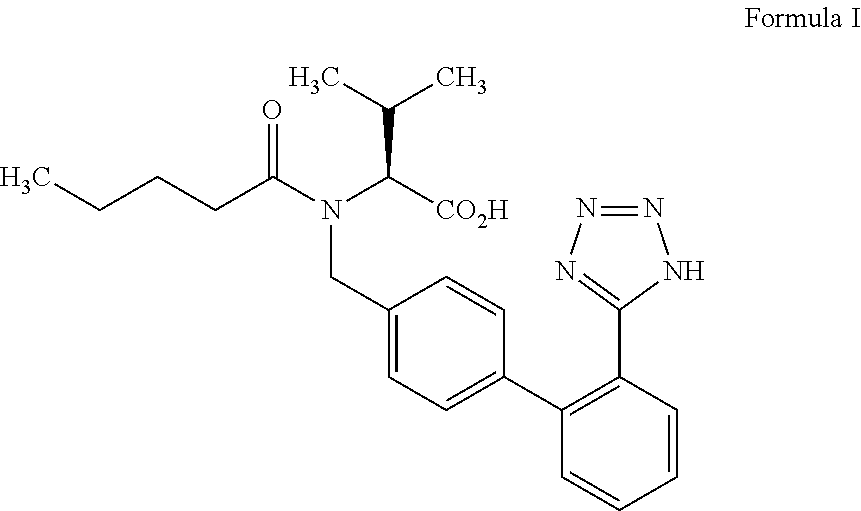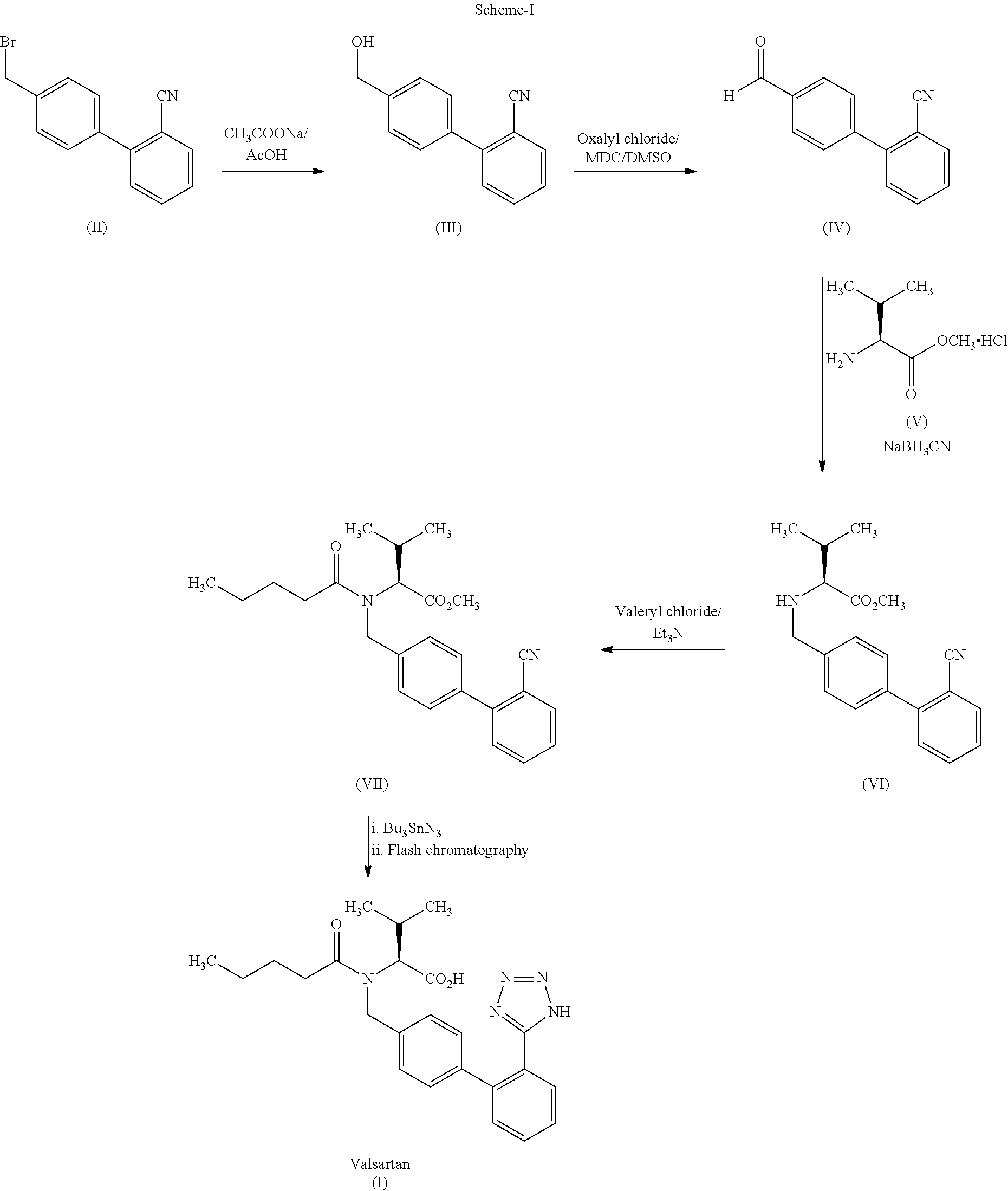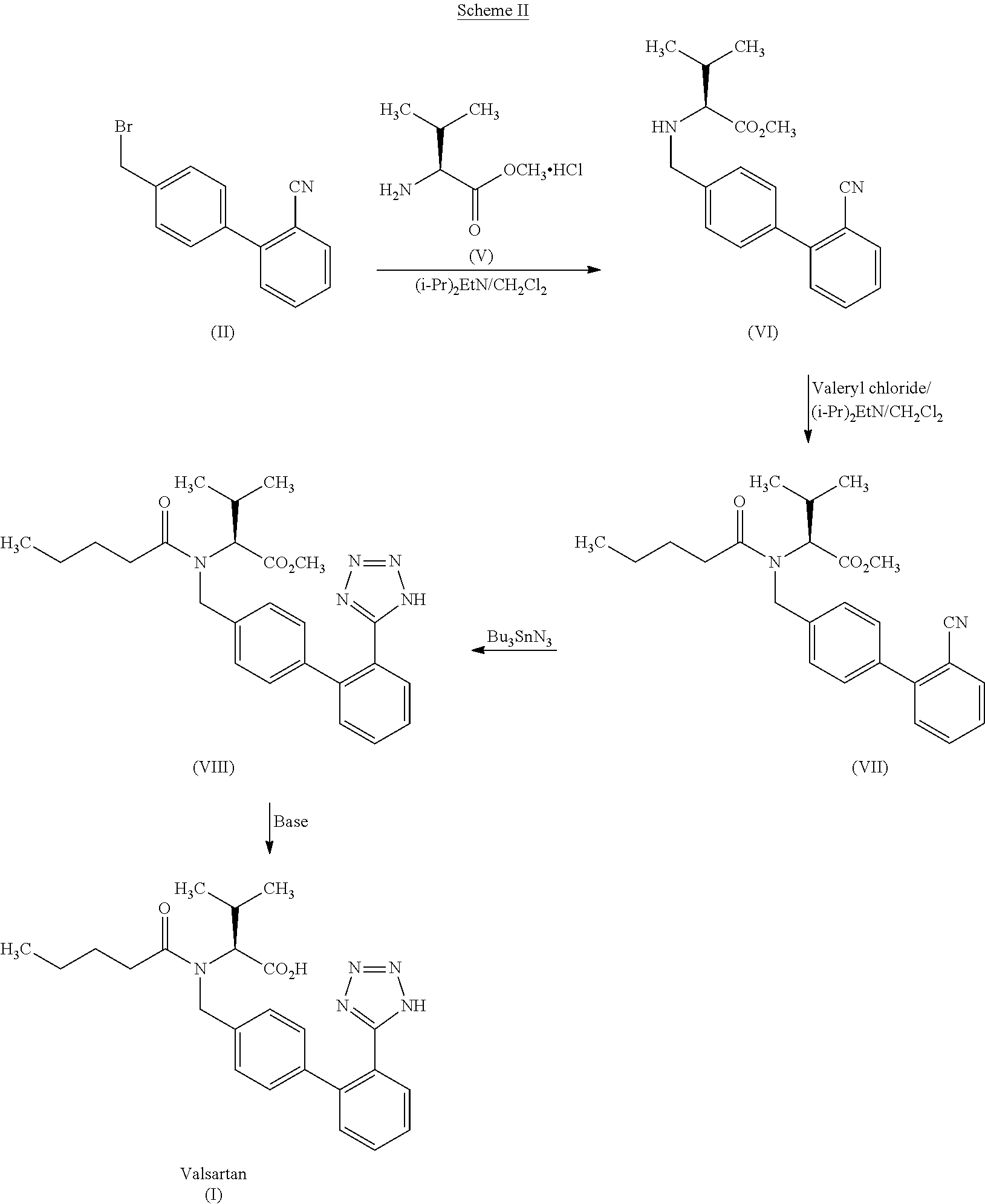Process for the preparation of valsartan
a technology of valsartan and valsartan, applied in the field of improvement, can solve the problems of affecting the quality of the product, reducing the yield, and requiring flash chromatography for purification
- Summary
- Abstract
- Description
- Claims
- Application Information
AI Technical Summary
Benefits of technology
Problems solved by technology
Method used
Image
Examples
example 1
Stage-1
Preparation of N-[(2′-cyanobiphenyl-4-yl)methyl]-(L)-valine methyl ester (VI)
[0070]4′-Bromomethyl-2-cyanobiphenyl (75 g, 0.2757 moles) was added to a mixture of potassium carbonate (95.12 g), DM water (225 ml), ethyl acetate (450 ml) and L-valine methyl ester hydrochloride (55.45 g, 0.330 moles) at 20-30° C. The reaction mixture was heated to 40-50° C. and stirred for 25 h. After completion of the reaction, the ethyl acetate layer was separated at 20-30° C., added DM water (375 ml) and adjusted the pH to 0.8-1.0 with dilute hydrochloric acid at 20-30° C. The aqueous layer was separated and extracted the product in to toluene (430 ml) by adjusting the pH to 8.0-8.5 with 20% w / w aqueous sodium carbonate solution. The toluene layer was washed with DM water (225 ml), concentrated under reduced pressure and dissolved in toluene (450 ml)
[0071]Chromatographic Purity: 99.86% (HPLC)
[0072]Formula VIa Impurity: 0.08%
Stage-2
Preparation of N-[(2′-cyanobiphenyl-4-yl)methyl]-N-valeryl-(L)-v...
example-2
Stage-1
Preparation of N-[(2′-cyanobiphenyl-4-yl)methyl]-(L)-valine methyl ester (VI)
[0090]4′-Bromomethyl-2-cyanobiphenyl (15 g, 0.0551 moles) was added to a mixture of potassium carbonate (19.05 g), DM water (45 ml), ethyl acetate (60 ml) and L-valine methyl ester hydrochloride (11.09 g, 0.066 moles) at 20-30° C. The reaction mixture was heated to 40-50° C. and stirred for 25 h. After completion of the reaction, the ethyl acetate layer was separated at 20-30° C., concentrated under reduced pressure and dissolved in o-xylene (90 ml)
[0091]Chromatographic Purity: 94.68% (HPLC)
[0092]Formula VIa Impurity: 1.55%
Stage-2
Preparation of N-[(2′-cyanobiphenyl-4-yl)methyl]-N-valeryl-(L)-valine methyl ester (VII)
[0093]N,N-Diisopropylethylamine (12 g, 0.0937 moles) followed by valeryl chloride (11.3 g, 0.0937 moles) were added to the o-xylene solution obtained in stage-2, at 20-25° C. and stirred for 3 h. DM water (75 ml) was added to the reaction at 20-30° C., and separated the organic layer and ...
PUM
| Property | Measurement | Unit |
|---|---|---|
| temperature | aaaaa | aaaaa |
| reaction temperature | aaaaa | aaaaa |
| temperature | aaaaa | aaaaa |
Abstract
Description
Claims
Application Information
 Login to View More
Login to View More - R&D
- Intellectual Property
- Life Sciences
- Materials
- Tech Scout
- Unparalleled Data Quality
- Higher Quality Content
- 60% Fewer Hallucinations
Browse by: Latest US Patents, China's latest patents, Technical Efficacy Thesaurus, Application Domain, Technology Topic, Popular Technical Reports.
© 2025 PatSnap. All rights reserved.Legal|Privacy policy|Modern Slavery Act Transparency Statement|Sitemap|About US| Contact US: help@patsnap.com



